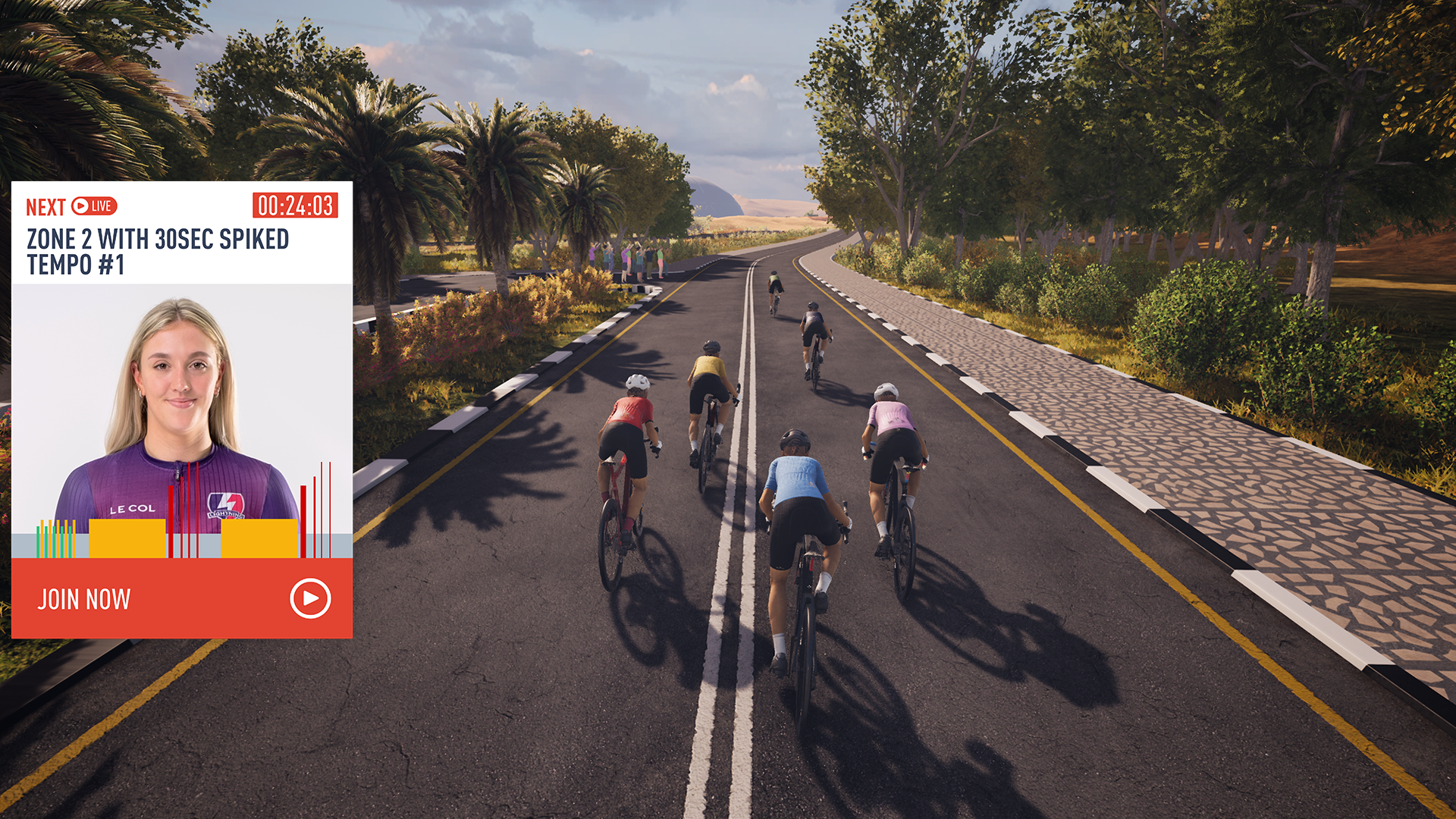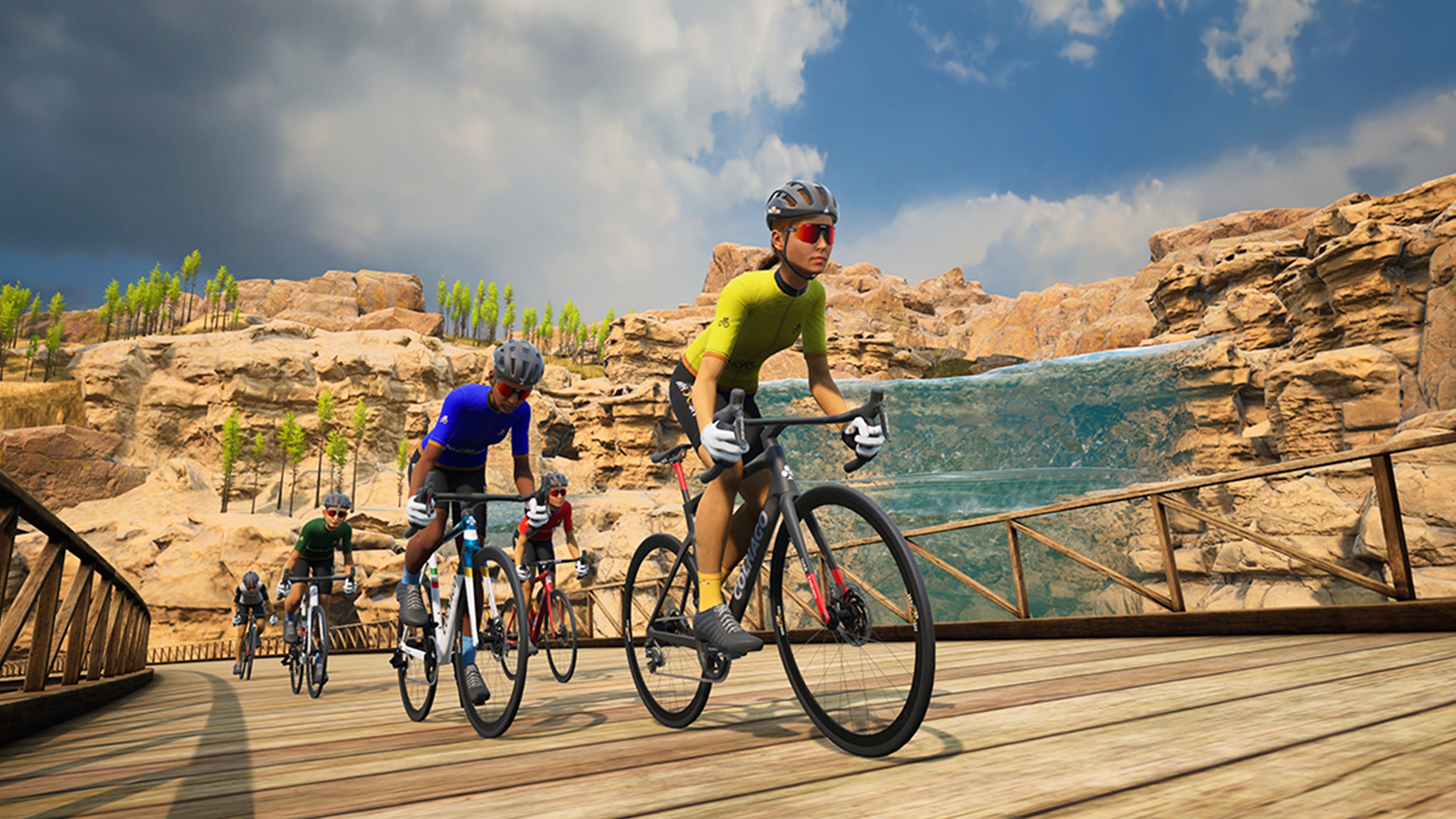The Rise of E-Sports
We speak to Matt Smithson of MyWhoosh to discover more about the growth of e-sports and how MyWhoosh designed a virtual reality UCI World Championship race course where anyone can win.
Matt Smithson’s email signature declares him to be “Manager of Events and Race Control” at MyWhoosh, in reality his role is far more varied than that, he sums it up “I look after the front end of MyWhoosh. I work with anything that the user sees and connect the full circle of what our users want and feed it back into the development team. I have a hand in shaping all our output; daily rides and workouts right through to the UCI World Championship. I deal with the features and functionality for the user, the testing and validation needed for racing.”
He begins by saying “ I’ve worked in cycling e-sports for 33 years…” before backing up and clarifying, “esports isn’t the right term. I’ve been around virtual or indoor cycling for decades, that’s not new, esports is part of the evolution within it.” Esports as we know it now – competing against avatars on virtual courses – is relatively new. Zwift only released its Beta programme in 2014, a mere decade ago.
But Smithson is wholly right, indoor bike riding is of course not new at all, “originally we rode indoors to warm up for an event or because it was terrible weather. Every rider had their set of rollers or an A-frame trainer. But a funny thing started happening, people realised that there was more to it than just an alternative to bad weather. They would have two weeks of bad weather training indoors and come out of it fitter than when they went in.”
Riders serious about their fitness started realising that indoor cycling could be a more focused, high value training session than being out on the road. People started to deliberately turbo train as part of their plan not just as an “inferior” alternative to being outside.
While attitudes towards indoor training started to change with riders taking a more scientific approach, what really made a difference was technology, “the CompuTrainer was a game changer,” explains Matt. CompuTrainer by RacerMate (which ceased production in 2017) was the first electronic static trainer. The big yellow screen with its square digital numbers will be remembered by many older riders as an instrument of torture – for the first time when you did training efforts there was nowhere to hide – and it brought data led scientific training into the home of every aspiring athlete.
Smithson continues the history, “when TrainerRoad came to the market and smart trainers took off it revolutionised indoor training from a structural point of view. Now you could ride to the numbers, not just pass the time, you had the perfect tool to dial in your fitness.” Virtual indoor cycling and e-sports would not exist without hardware from people like Wahoo.
But at this point indoor training, whilst acknowledged as a highly effective fitness builder, was still the preserve of dedicated performance seeking riders. No one was riding indoors for fun. Until Zwift entered the room, “we can’t talk about esports without talking about Zwift, “says Matt “Zwift provided the vital missing elements that made people want to ride indoors.”
Virtual cycling, with courses, avatars and racing, added a sense of fun and community to indoor cycling and it became a viable option for riding, not as an alternative but as a first choice, “my mates for example do anything under 90 minutes indoors and their outdoor rides at the weekend.”
The growth of virtual reality indoor cycling was meteoric, with the Covid-19 pandemic at least partially responsible for its accelerated growth, “lockdown came and there was no choice. In Australia I couldn’t go more than 5km from my house for 6 months.” But what cemented people’s use of virtual riding apps was the need to connect with others, “people started to get the camaraderie and competition of cycling they craved online which wasn’t at the time available in real life.”
Entercise? Exer-tainment? What is this?
“I’m not at MyWhoosh to make you a better cyclist, I’m in the game of entertainment. A lot of our developers are gamers – so they understand what they do but cycling is a different thing.” This frees up a whole new way of thinking that is not limited to just replicating outdoor cycling, “the more we can entertain the rider the better. I think we will see more blending of gaming and cycling. Old school style games powered by your legs – jumping cracks, dodging penguins whatever it takes. If that increases our fitness and skills then that is a bonus. Maybe at Christmas you’ll get a trainer and a computer game instead of a hand-held game. Ten hours a week of gaming could translate into ten hours of fitness.”
One of the first tools to combine fitness and gaming was the Nintendo Wii – virtual reality cycling takes it up a notch and could bring new people to ‘real world’ cycling as well. From competing at home, it could spark interest in watching racing or cycling outside, “cycling gets people hooked. It might start with a game but once someone becomes engaged in the cycling lifestyle it can lead in many directions. E-sports can help grow all parts of cycling.”
Creating a more accessible way of cycling
Virtual reality has opened up cycling like nothing before, it has made the old adage of ‘let your legs do the talking’ a reality. “It’s taken some of the stigmas away from cycling – I don’t know if it’s a man or woman, old guy, young guy or what bike they are riding. On screen you are just a bike rider.”
Cycling like many sports has its traditions and gatekeepers, it has a widely acknowledged problem with diversity from grass roots through to professional racing, “For some people there is still a fear of meeting for outside rides, that you are somehow being judged,” says Matt, “ Online you don’t have to get an okay from the leader of the local bunch. You don’t need the validation of other riders. You have got a way that you can show the world “I’m really good at this'' without having to meet anyone’s approval.”
The accessibility of indoor racing is present on many levels, “you can race at home – you don’t risk bad weather, crashing or having to drive anywhere. If you only have an hour to spare you can still ride or race.” There are more participants taking part in online competition than racers holding federation licences globally.
Changing the way we race and ride
So, is that a problem for cycling? Are evening crits, 4th cat races and grass roots events going to end up a thing of the past? Where will tomorrow’s pro riders learn their skills?
“It’s a different sport – indoor and outdoor – there is nowhere to hide indoors. We are seeing numbers from some guys that would be formidable out on the road. I love the sport of cycling as a whole, but indoor cycling doesn’t actually teach you to ride a bike. It has its drawbacks, people can turn up with an FTP of 300 watts but can’t go round a corner.”
This of course is the fear of the traditionalist and some of the apprehensive or even plain snobbish responses to e-sport racing. “There is still some resistance from traditional cyclists but as someone who loves cycling I can only see good in this. Normal riders see the racing as achievable, they are very accepting of it. I use my wife as an example – she will race 4 days a week at home but she would never race outdoors.”
Technology is on its mission to make indoor and outdoor riding even more seamless, “cornering and braking, rolling turns, it is all coming. We are going to replicate what we are doing outside indoors and I think we may reach a point where the only racing outside is at pro level.” A statement that backs up the fears of many national cycling federations who are already struggling to sustain grass roots events and participation numbers. The solution? What you can’t change, embrace, “E-sports has increased racing numbers tenfold. I don’t understand why more cycling clubs don’t have an e-sports events arms, it could grow clubs again.”
Indoor cycling is not a replacement for riding in the outdoors, but it can be complimentary. “There will always be a blending of indoor and outdoor for training and social riding. That will never go away, but racing is an interesting one. My hope is that e-sports will become its own discipline,” Matt concludes.
About MyWhoosh
Born in 2019 in Abu Dhabi, UAE, MyWhoosh is a free-to-use virtual cycling app. Designed by professionals and available to all riders, MyWhoosh aims to push riders to their limits through immersive, personalised and challenging indoor cycling experiences. Used by professionals and beginners alike, MyWhoosh offers visually stunning virtual worlds, over 730 tailored workout plans and weekly competitive races. For more information: www.mywhoosh.com










